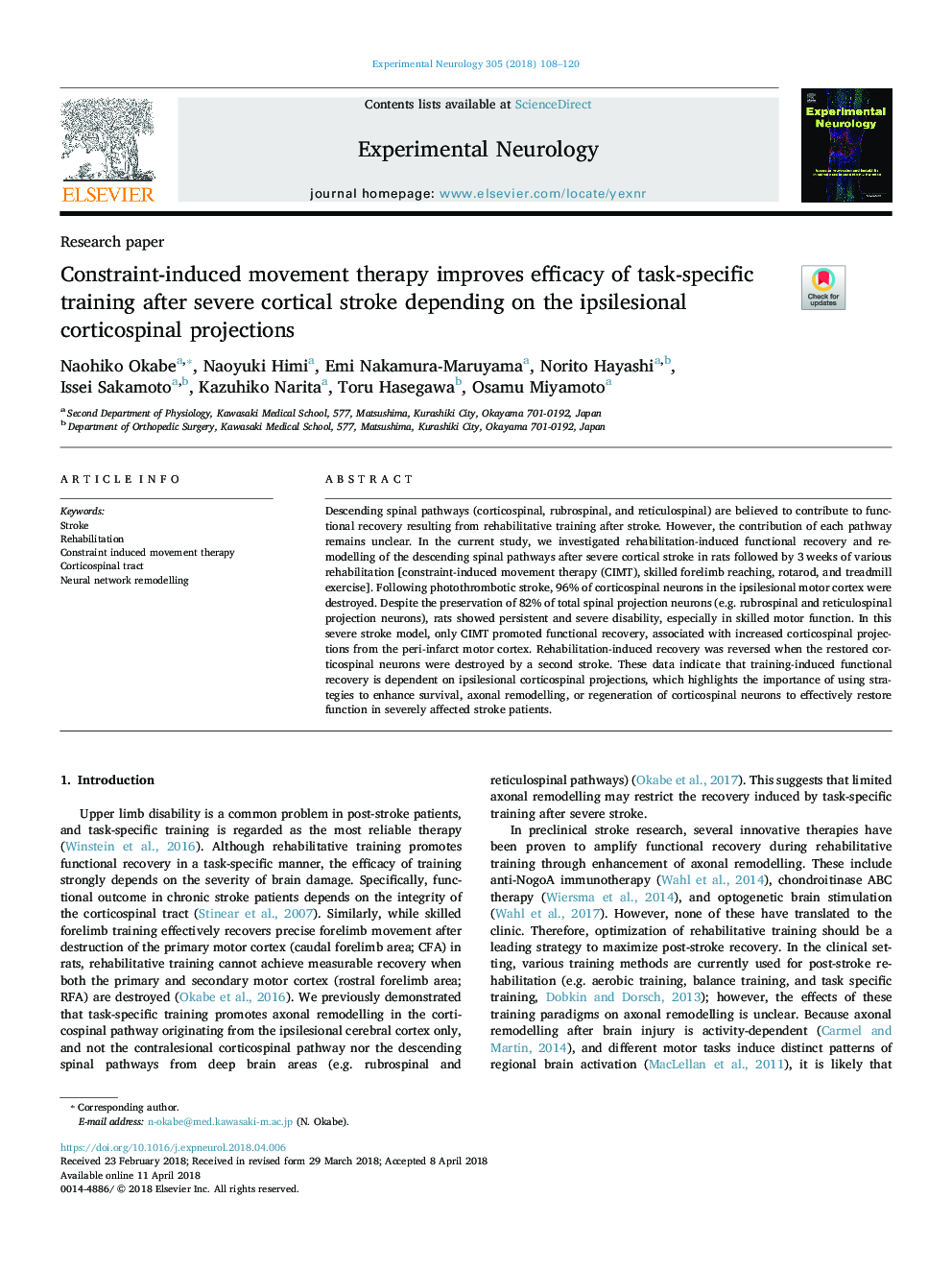| Article ID | Journal | Published Year | Pages | File Type |
|---|---|---|---|---|
| 8684623 | Experimental Neurology | 2018 | 13 Pages |
Abstract
Descending spinal pathways (corticospinal, rubrospinal, and reticulospinal) are believed to contribute to functional recovery resulting from rehabilitative training after stroke. However, the contribution of each pathway remains unclear. In the current study, we investigated rehabilitation-induced functional recovery and remodelling of the descending spinal pathways after severe cortical stroke in rats followed by 3â¯weeks of various rehabilitation [constraint-induced movement therapy (CIMT), skilled forelimb reaching, rotarod, and treadmill exercise]. Following photothrombotic stroke, 96% of corticospinal neurons in the ipsilesional motor cortex were destroyed. Despite the preservation of 82% of total spinal projection neurons (e.g. rubrospinal and reticulospinal projection neurons), rats showed persistent and severe disability, especially in skilled motor function. In this severe stroke model, only CIMT promoted functional recovery, associated with increased corticospinal projections from the peri-infarct motor cortex. Rehabilitation-induced recovery was reversed when the restored corticospinal neurons were destroyed by a second stroke. These data indicate that training-induced functional recovery is dependent on ipsilesional corticospinal projections, which highlights the importance of using strategies to enhance survival, axonal remodelling, or regeneration of corticospinal neurons to effectively restore function in severely affected stroke patients.
Related Topics
Life Sciences
Neuroscience
Neurology
Authors
Naohiko Okabe, Naoyuki Himi, Emi Nakamura-Maruyama, Norito Hayashi, Issei Sakamoto, Kazuhiko Narita, Toru Hasegawa, Osamu Miyamoto,
